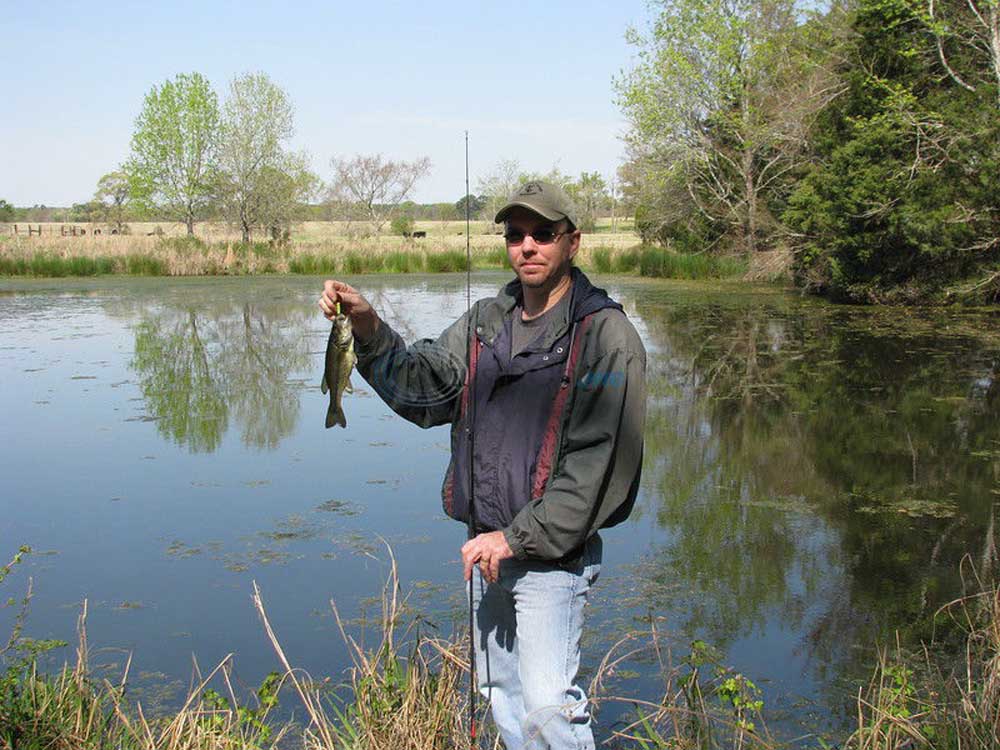Time to plan stocking strategies for Texas private waters
Published 7:19 am Friday, January 29, 2016

- TAES
Billy Higginbotham/Texas A&M Agrilife Extension Service
How was the fishing in your farm or ranch pond last year? Did it meet expectations of fall flat? The interesting thing about private waters is that you get out of them based on what you put into them. Let me explain: A pond is like a garden-prepare it right, tend it as needed and you reap the rewards of fresh home grown vegetables to share with your family and friends. Now, to me, it’s much more fun to harvest a nice largemouth bass than to pluck a tomato off a vine, but my wife would disagree.
Trending
We tend to think of fish stocking as a cure-all. If bass fishing is poor, then dump in some more bass. This is the worst mistake you can make. If your existing bass population is not performing as it should, then your time and money is better spent to determine the limiting factor, be it too much aquatic vegetation, muddy water, low pH or lack of a solid forage fish base.
Always get a water sample checked before re-stocking any fish to determine if low pH and total alkalinity may be limiting fish production. Your county Extension agent can provide this service for you. We also recommend that ponds larger than one surface acre be managed for largemouth bass (if desired), the appropriate forage species and perhaps catfish based on pond owner goals. Smaller ponds are better suited for catfish only stocking and are capable of producing up to 1,000 pounds of edible size catfish per surface acre per year if a regular feeding program is employed.
In smaller ponds managed for catfish, it’s ok to re-stock channel or blue catfish every few years based on the number and weight removed to satisfy those family fish fries. The important factor here is never carry more than 1,000 pounds of catfish per surface acre into the hot months, beginning in June. To do so will increase the likelihood for having an oxygen depletion during the dog days of summer.
Catfish fingerlings 6 inches long stocked in March or April can put on a pound of weight gain by the onset of Winter if they are fed 5 to 7 days a week with a good quality floating fish ration. If you do not live on the property, the use of an automatic fish feeder is an ideal way to keep those catfish fed and growing throughout our 7 month growing season.
Re-stocking bass lakes is a little trickier. If you have never stocked the Florida sub-species of bass but desire to produce larger fish, a stocking of 25 pure Florida bass fingerlings per surface acre should infuse the Florida gene into your bass population. Otherwise, bass should reproduce sufficiently on an annual basis where re-stocking should not be necessary.
For our East Texas bass populations to flourish in farm and ranch ponds and lakes, bluegill have to be present. The bluegill is the only sunfish species that can reproduce at a sufficient rate to keep your bas population growing. We will supplement the bluegill with additional forage species such as the redear sunfish, threadfin shad and/or tilapia which will die out in the winter and have to be re-stocked. Like largemouth bass, bluegill normally sustain their numbers through the years with annual reproduction and should not have to be re-stocked if they are already present under most circumstances. By the way, suing that same catfish feeder to feed bluegill is an excellent way to boost forage production. The more pounds of forage, the more pounds of bass your lake will support.
Trending
Lastly, it is Ok to stock catfish in your bass lake. The key is to back way off the stocking rate compared to the one used for a catfish only pond. For example, 25 to 50 channel or blue catfish can be stocked per surface acre every few years to maintain a catfish population. However, fingerlings must be at least 8 inches in length to avoid bass predation if large bass are present.
Our ponds are full and re-stocking season if needed will soon be here. Get a game plan together on how to proceed to gain more recreational enjoyment from your pond in 2016. IT may require some re-stocking or it may be better to spend time and money managing what you already have.
Contact Dr. Billy Higginbotham at Billy.Higginbotham@ag.tamu.edu.



